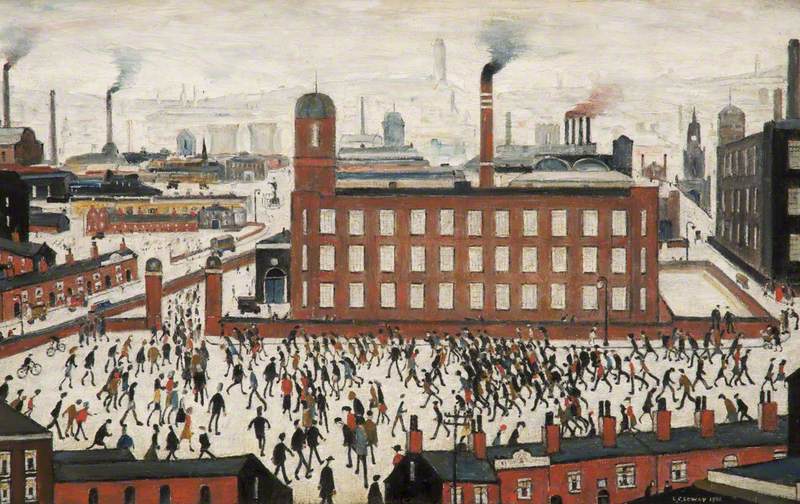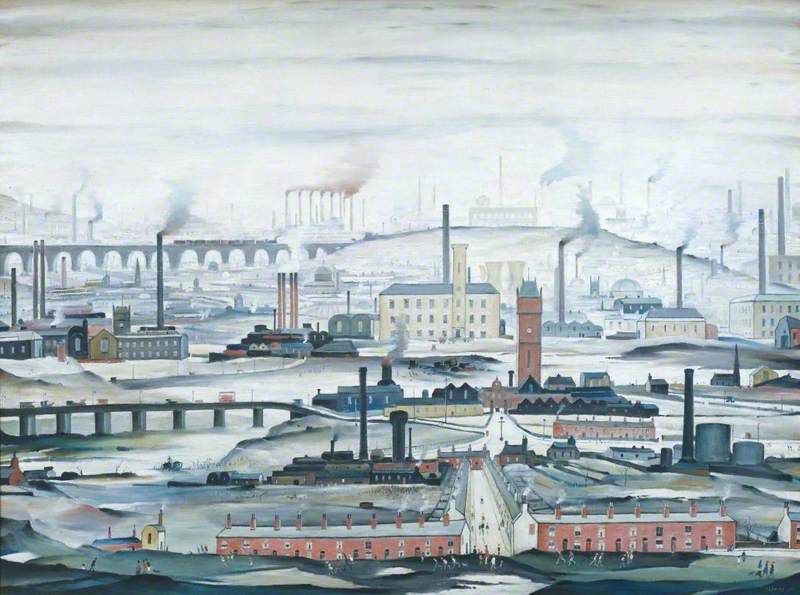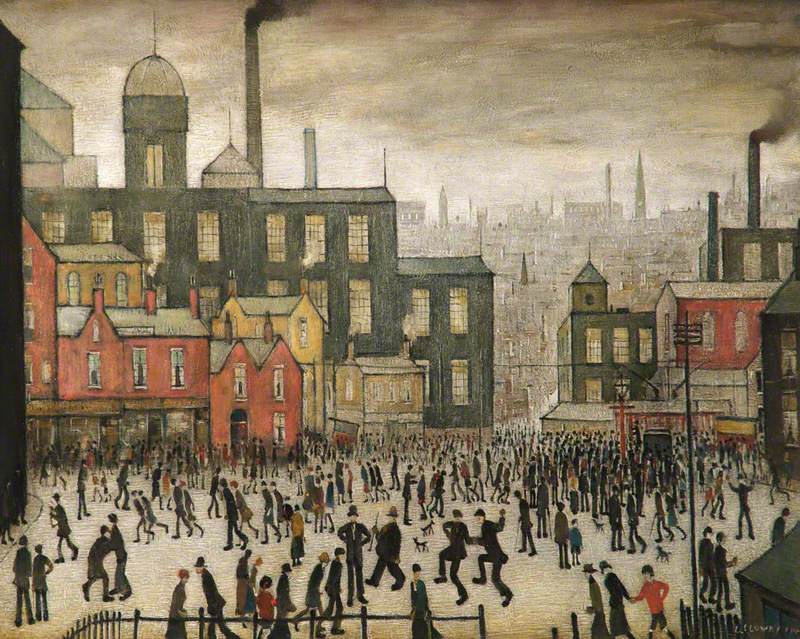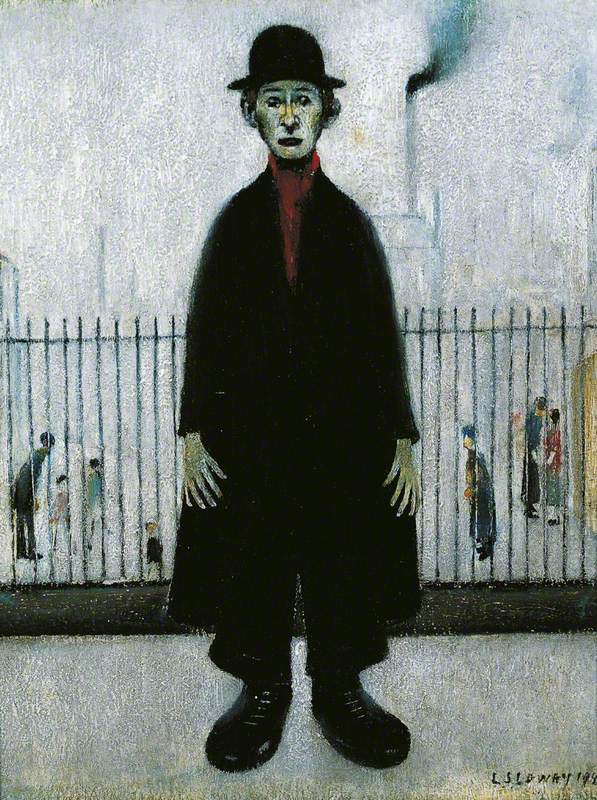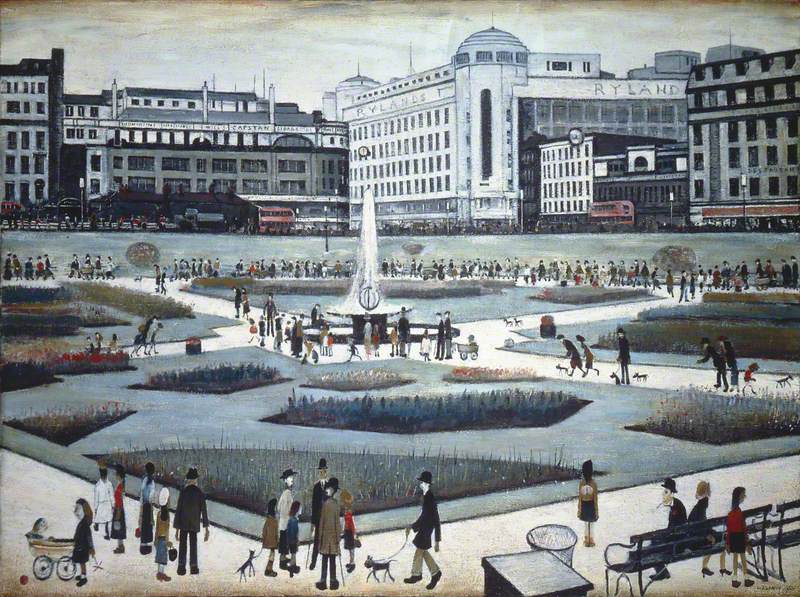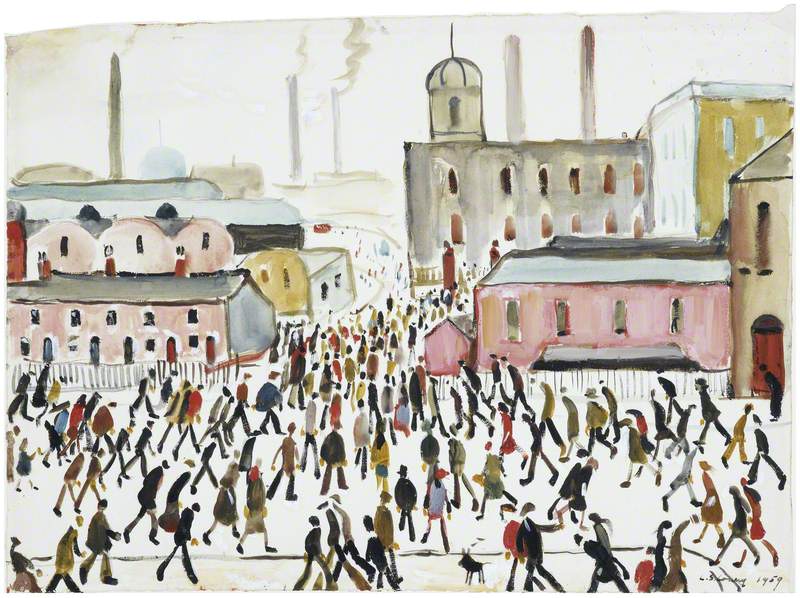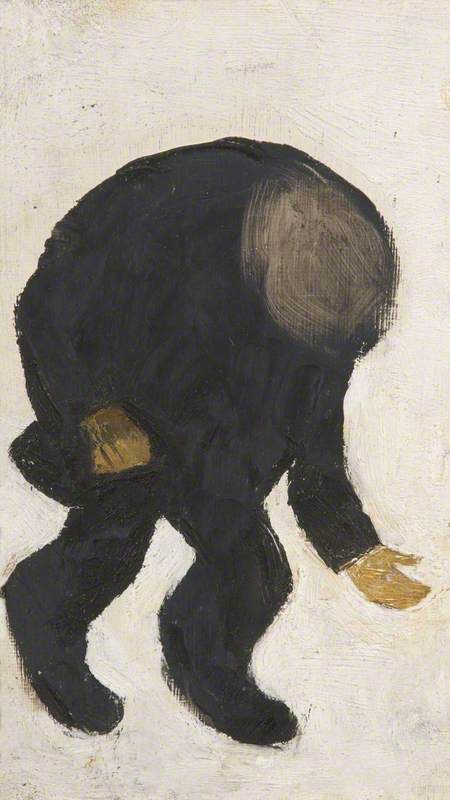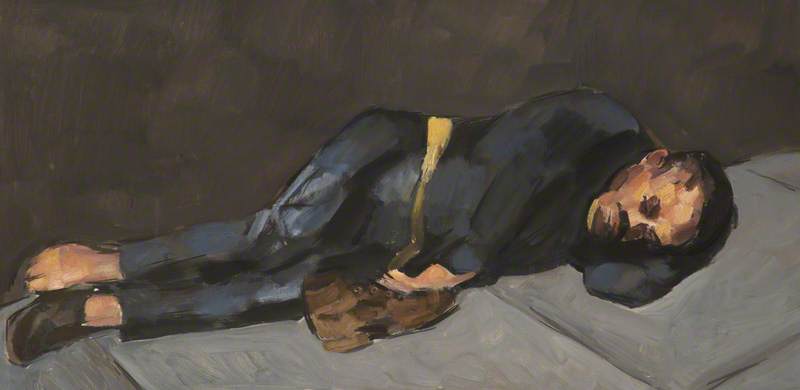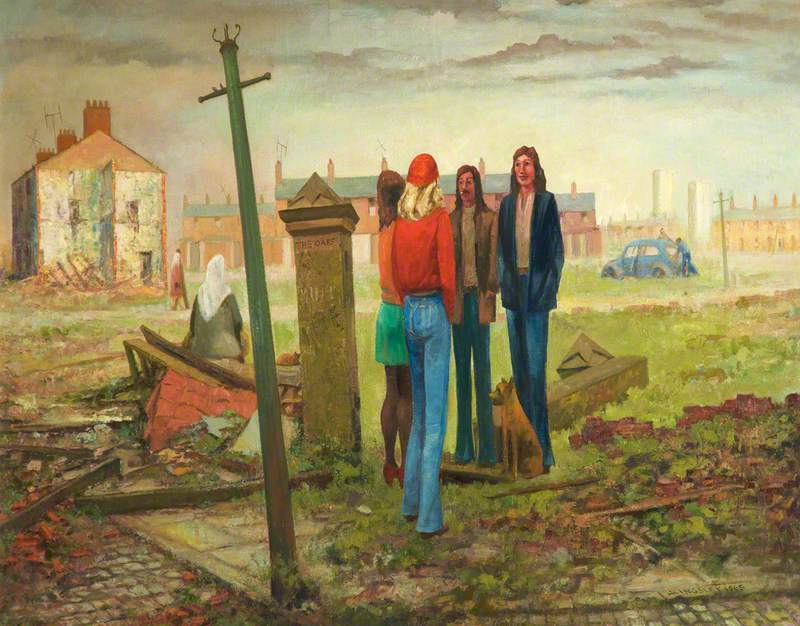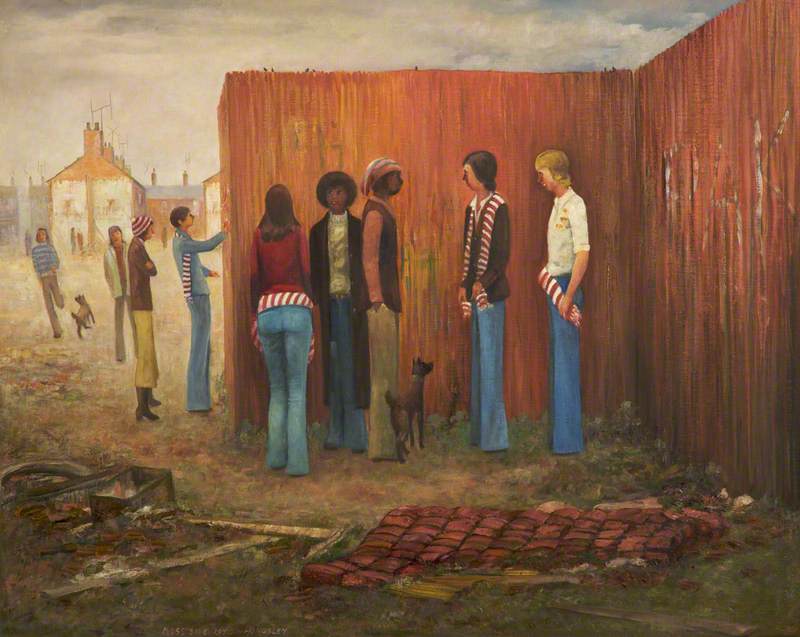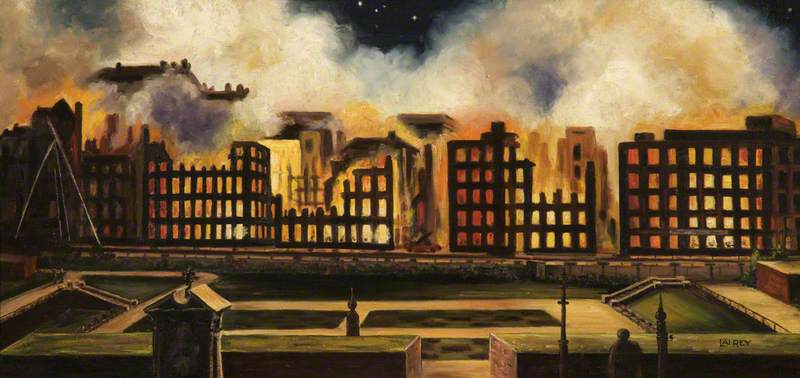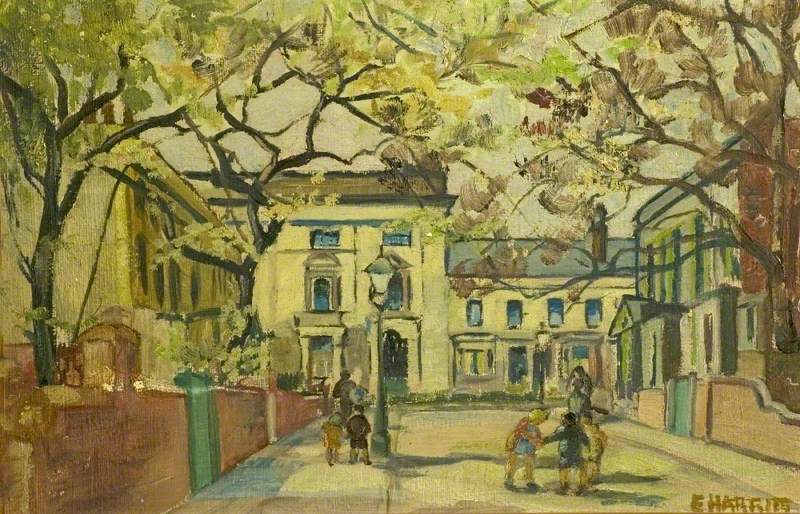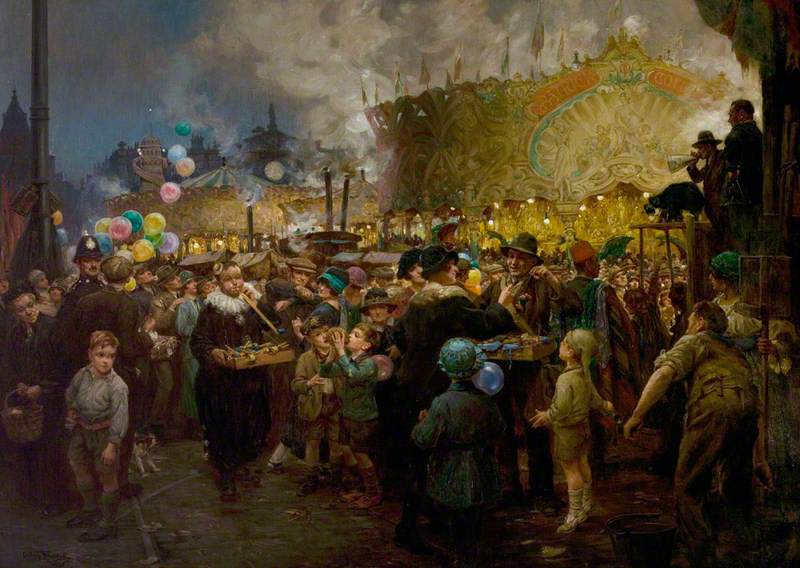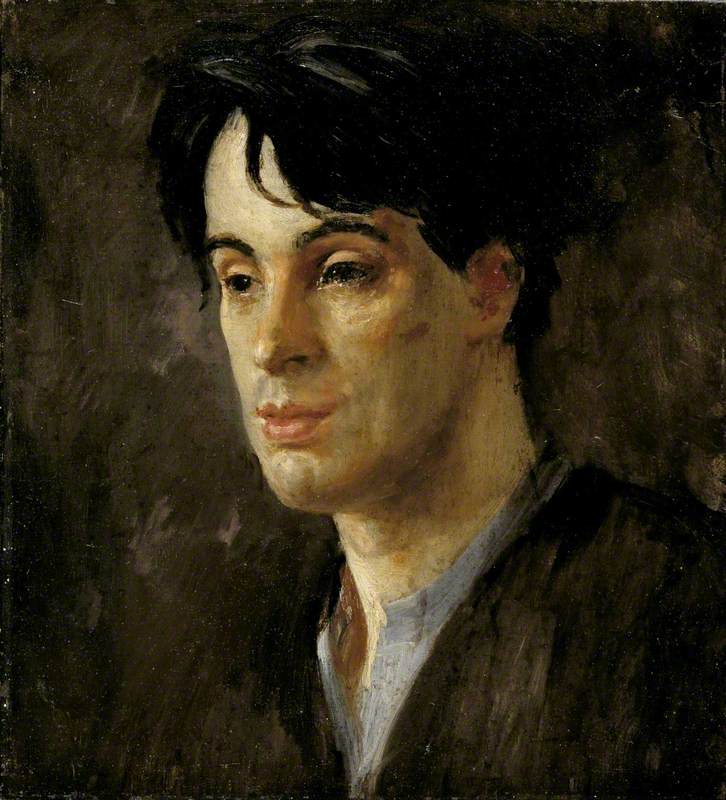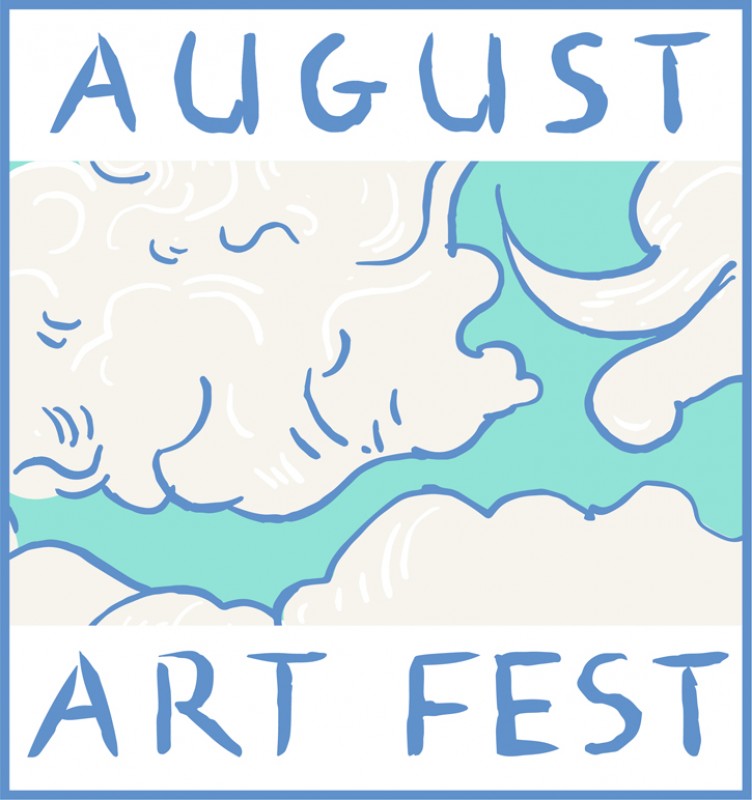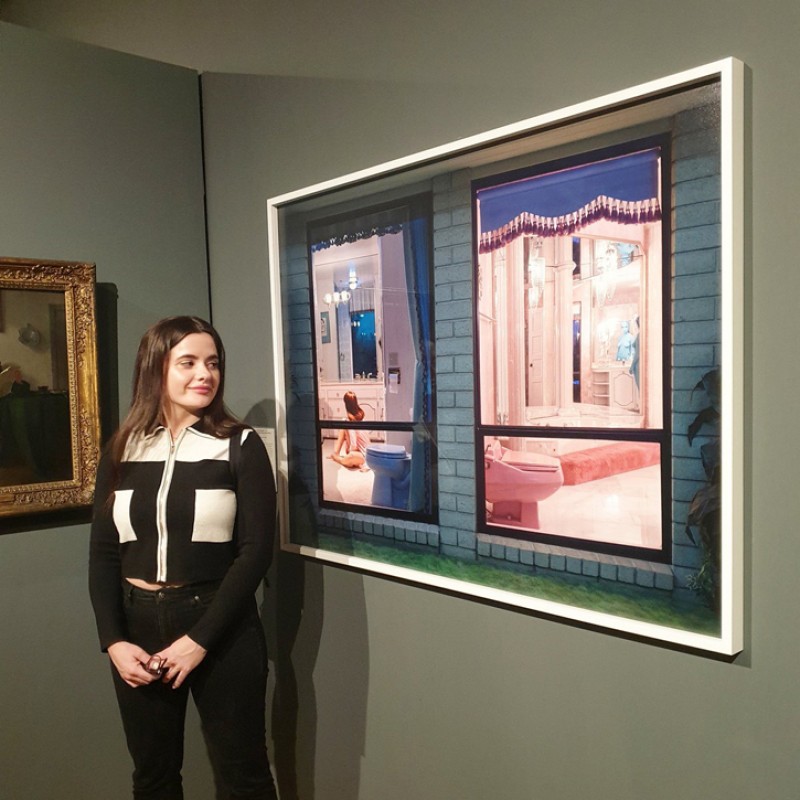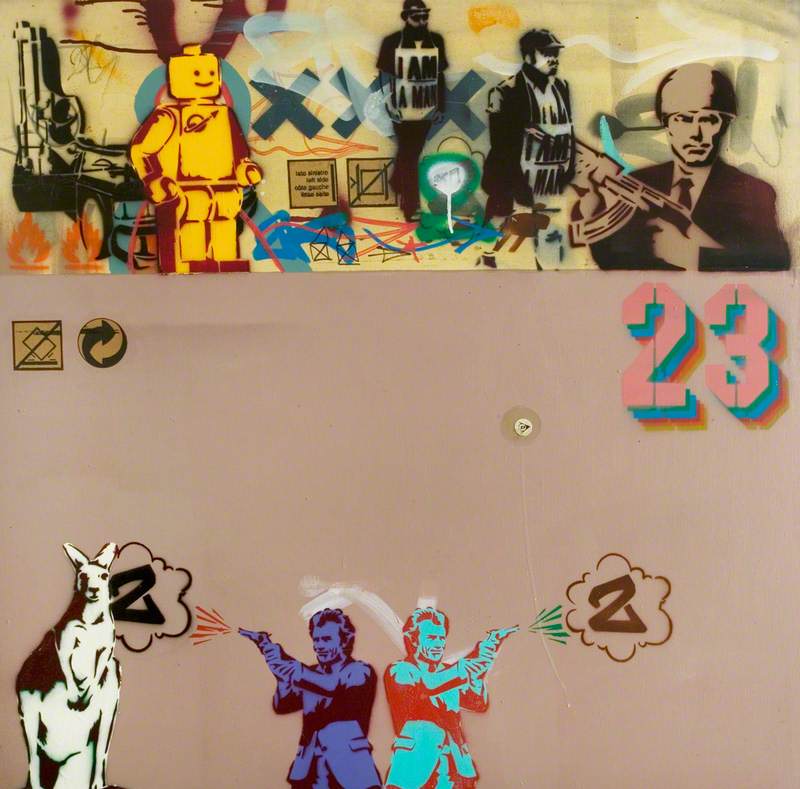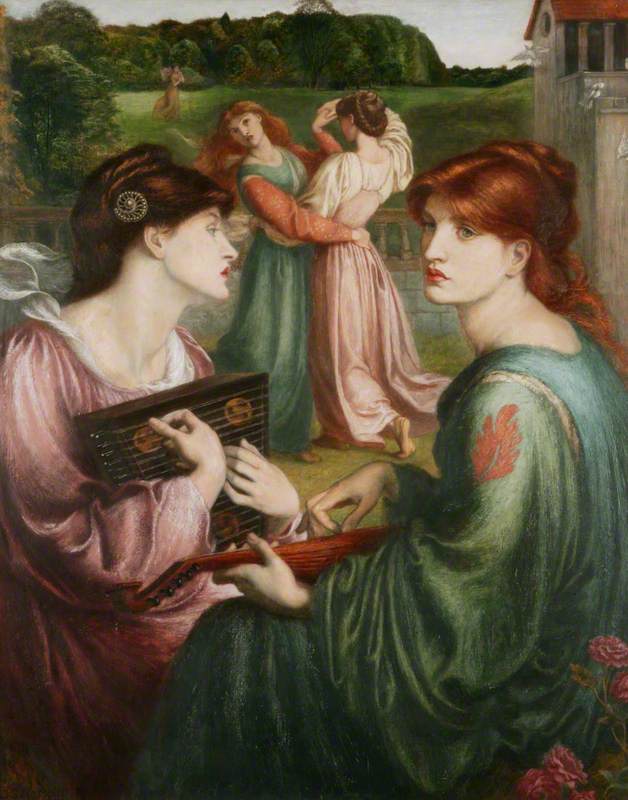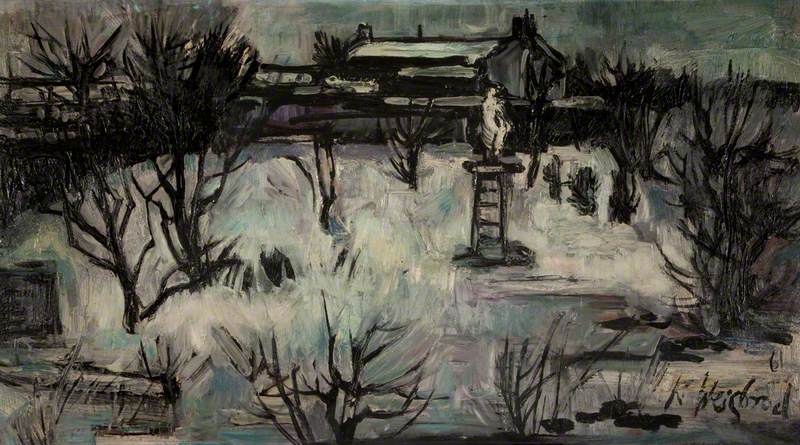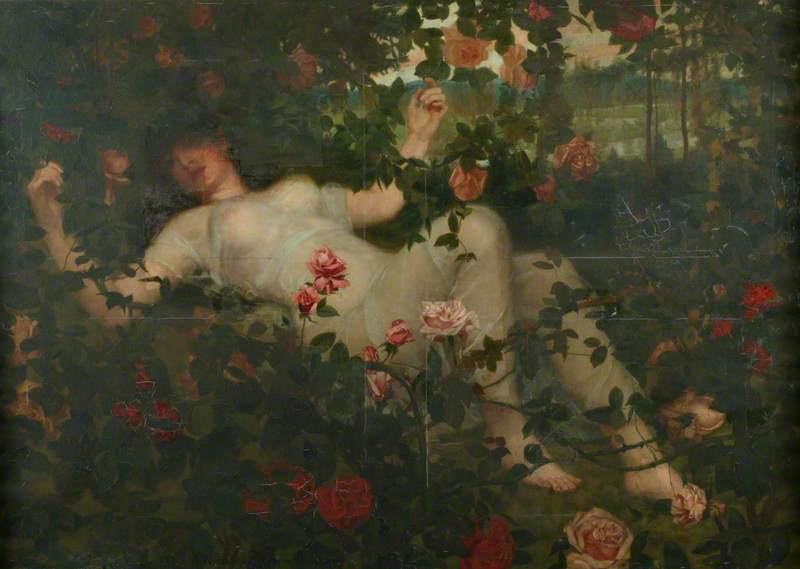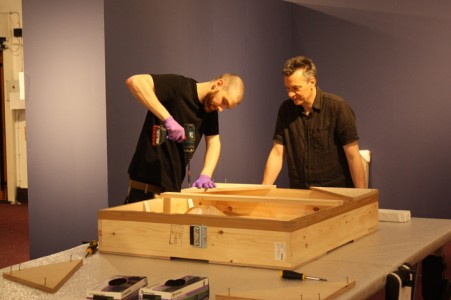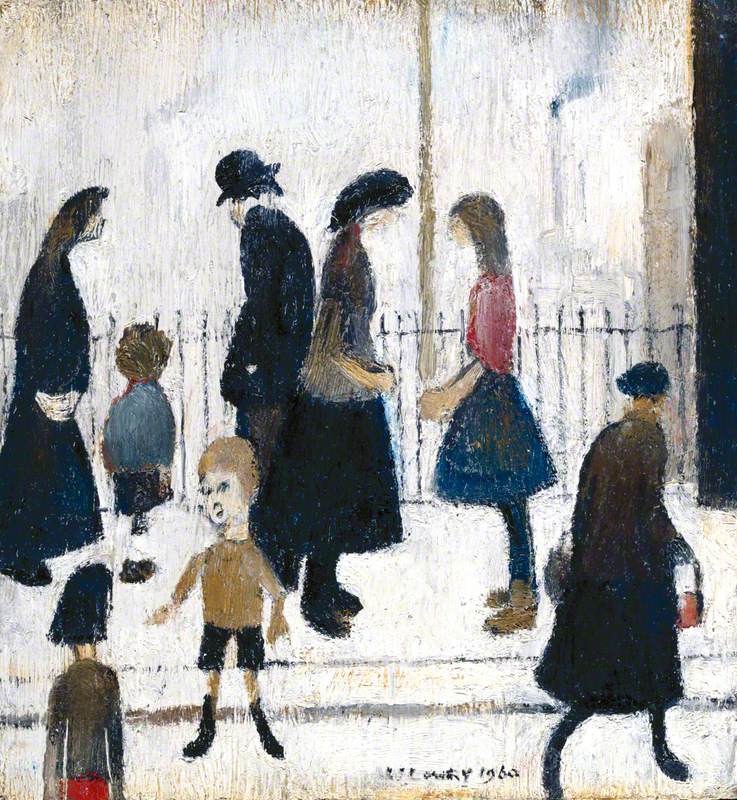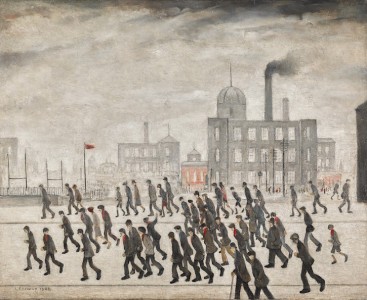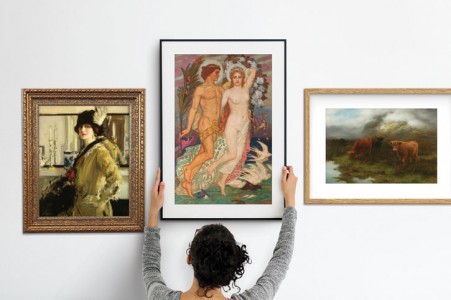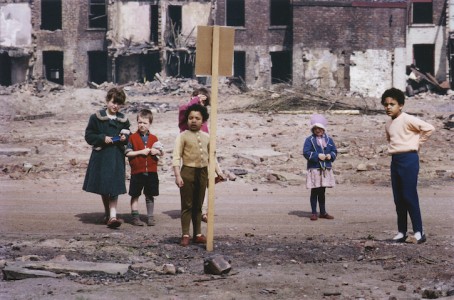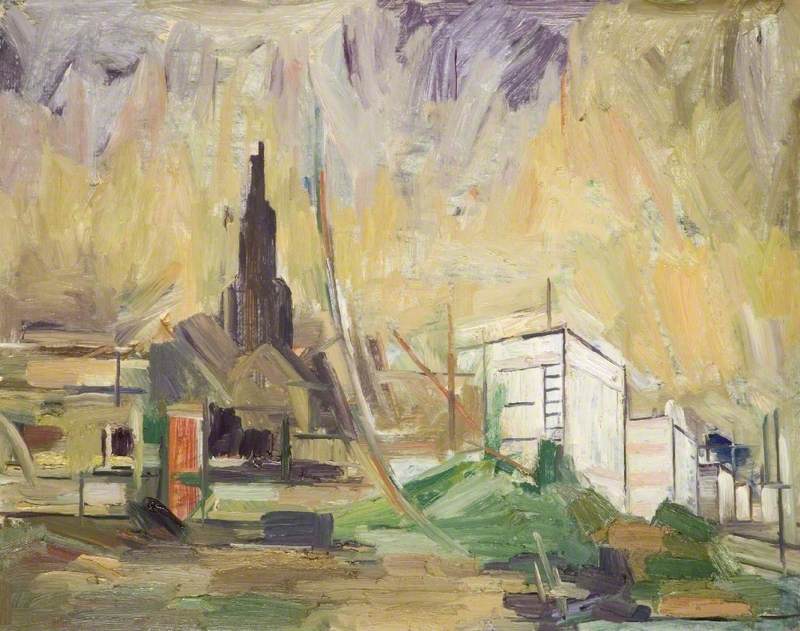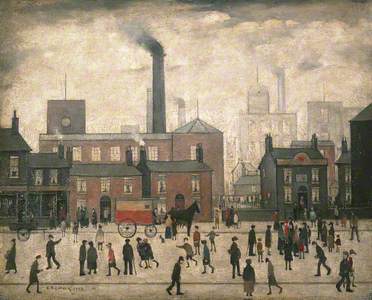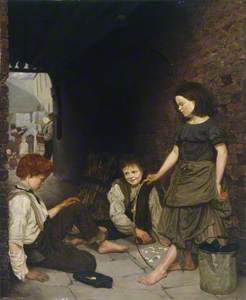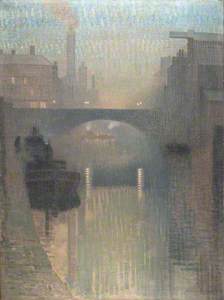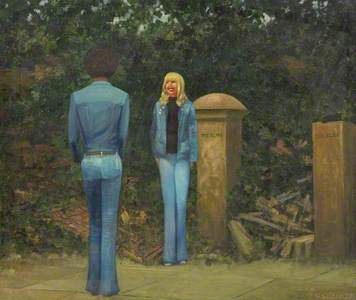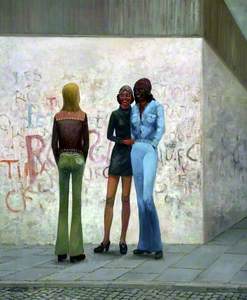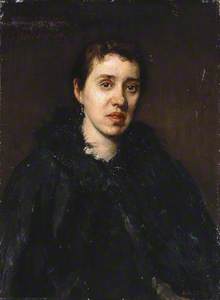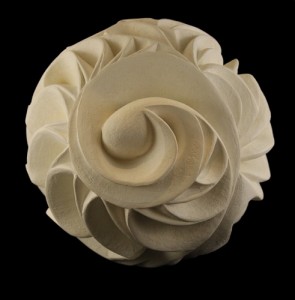Let me take you on a guided tour of my hometown of Manchester. It's a tour in which you need not leave the comforts of your living room on this chilly winter's day, for this is an adventure through the great city via the medium of its art. It's an exploration through both time and place, through some of the startling images that have been produced over the years.
It seems fitting to begin with an artist whose work is particularly haunting and resonant in these bleak midwinter months: L. S. Lowry, famed for his foggy cityscapes. The artist was born in an area of the city called Stretford (home of Manchester United football club), just round the corner from my childhood home.
It's the same area where the suffragette Emmeline Pankhurst grew up, and where The Smiths' frontman Morrissey spent his childhood – I wonder if it's more than coincidental that the work of both Lowry and Morrissey is infused with melancholy, though both had a knack for alchemising hardship into art, turning gloominess into gold.
Manchester was the first industrial city in the world and many of Lowry's paintings powerfully depict this aspect: Industrial Scene, Industrial Landscape, Our Town and A Manufacturing Town.
Lowry's painting A Lancashire Cotton-Worker captures a core produce of the city, which became known as 'Cottonopolis' on account of the abundance of cotton which was carried along the Manchester Ship Canal and manufactured in the city's many mills (a feature in several paintings including Coming Home from the Mill).
Other landmarks depicted in his work include Piccadilly Gardens and The Canal Bridge, but some of the most striking are scenes of unnamed streets, heightening a sense of anonymity and displacement.
Lowry's were images of the everyday working-class person (such as Going to Work), of the way place can seem to absorb and even consume people.
It's not only places, but people who are also anonymous in some of his work, including the faceless picture A Beggar, capturing the poverty of the city.
Other artists to capture the city's poverty include Thomas Armstrong. See his work Manchester and Salford Children – indeed the city was notorious for its Victorian slums.
Poignantly depicting homelessness is The Sleeping Man in a Greater Manchester Street by Harold Riley.
The city has been explored in a range of artistic styles, from the realist to the surreal, which make us view the place with a fresh perspective. For example, a strong influence on Lowry's work was the French Impressionist artist Adolphe Valette, who moved to Manchester (indeed, Lowry attended some classes taught by Valette and both excelled in cityscapes of Manchester).
Moving through the decades, Manchester grew to be a multicultural city, with the arrival of immigrants during the era of the Empire Windrush, and, following the end of Empire, with people coming from Britain's former colonies (my own parents were immigrants to the city from former colonies).
There are some gems of art which colourfully capture the multicultural aspect of the city including several works by Harry Kingsley including Embryo, Moss Side, Manchester, Blue Jeans, Moss Side, Manchester, After the Match, Moss Side, Manchester and Albert Square, Manchester – also the location of the Manchester Town Hall.
Blue Jeans, Moss Side, Manchester
1965
Harry Kingsley (1914–1998) 
I have trawled through art archives searching for the work of women artists from and depicting the city, and they are outnumbered by men, although no doubt there are some unsung talents whose work lies underappreciated. I wonder who the artists of the paintings were, for those marked as by 'Anonymous' – as Virginia Woolf so eloquently put it, 'For most of history, Anonymous was a woman'.
It's worth noting that the campaigner Sylvia Pankhurst was also a talented artist who studied at the Manchester School of Art and her portfolio includes the Women Workers of England project, a series of paintings and articles about women workers and the conditions in which they worked, a project for which she toured the north of England.
The artist Annie Swynnerton was born in Hulme, Manchester and studied at the Manchester School of Art along with her contemporary, Isabel Dacre of whom she painted a portrait.
More contemporary images include Mr Manchester, a portrait of Tony Wilson, founder of the infamous Hacienda club – for indeed the city is famous not only for its football but for its music.
That iconic venue, the Hacienda, closed in 1997.
A journey through the art of Manchester shows how the city has evolved over the years: what has remained in parts of it and what is now gone, and how it survived the most destructive moments in its history. In the painting Manchester Blitz (Piccadilly), 1940 by Lilian Airey, the fierce flames speak for themselves.
I have a vivid memory of the moment when the 1996 IRA bomb – the biggest bomb in peacetime Britain – decimated the heart of the city centre, and the subsequent years of rebuilding. Paintings poignantly capture the changing cityscape, how it once was and how it has reinvented itself. It will be interesting to see how present and future artists capture the spirit of the contemporary city.
Morning Sunlight, Clough Lane, Grasscroft, Saddleworth, Greater Manchester
2002
John McCombs (b.1943) 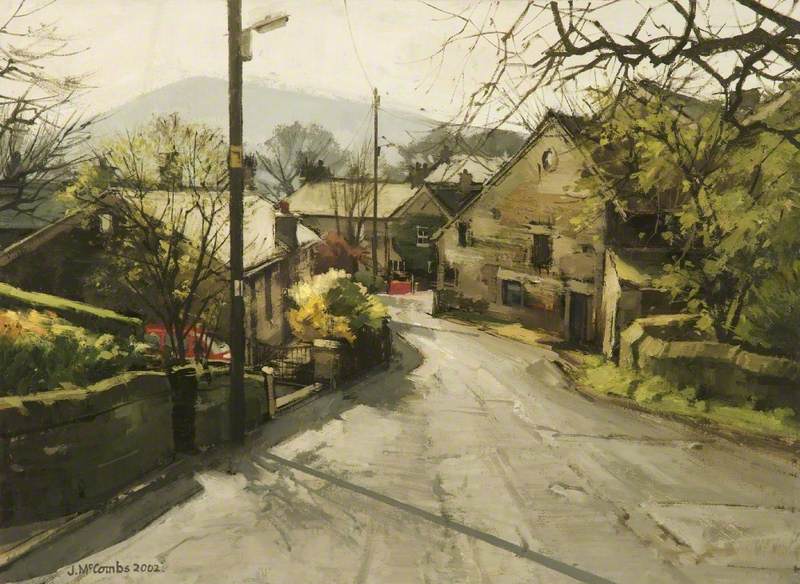
And to overturn the stereotype that it's 'grim up north' and as a bright anecdote to the gloom of Lowry, may I leave you with John McCombs' Morning Sunlight and Evelyn Harris's Sunshine in Manchester.
Between them, these artists were adept at capturing all the light and shade of life in this city.
Anita Sethi, journalist, writer and critic
